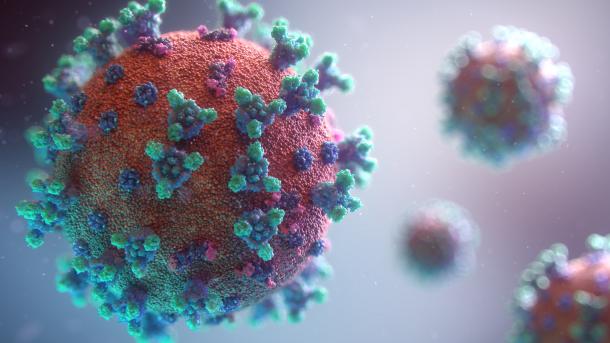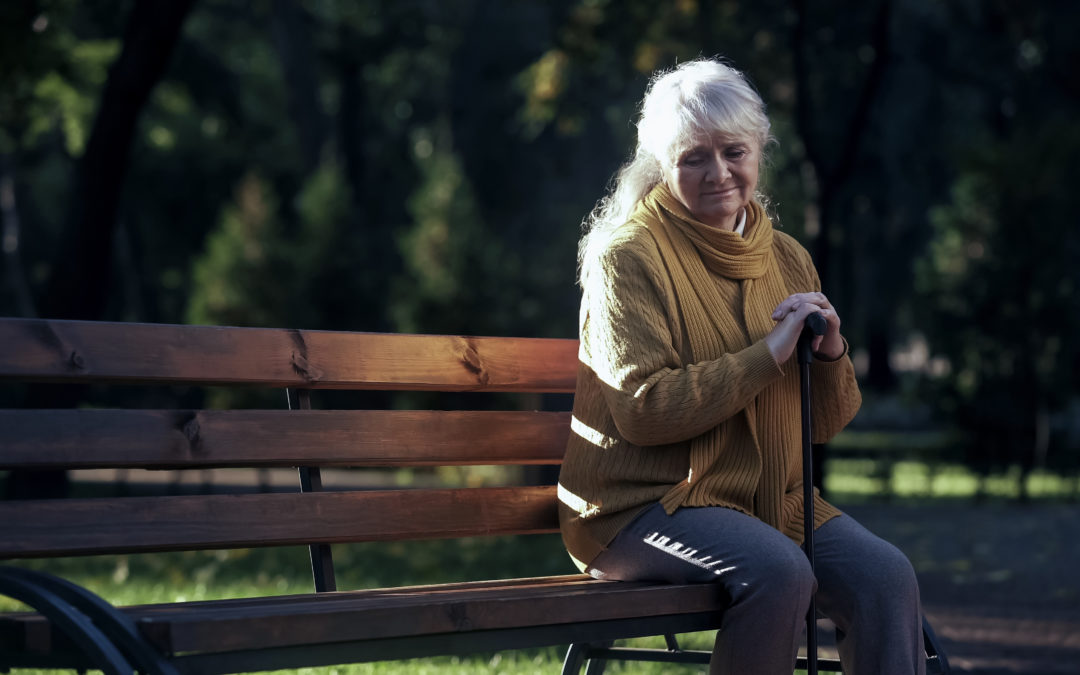No Results Found
The page you requested could not be found. Try refining your search, or use the navigation above to locate the post.


I have reported multiple times on loneliness during the pandemic – mostly because interest and research into loneliness has taken a large uptick.
I have also reported on how to combat this and was happy to see that a piece of research just out proved what I had already proposed and gives some solid evidence to this (and why). Not only that but it shows how best to use one’s leisure time – and achieve more life satisfaction.
The study out of Penn State looked at international university students who may be more susceptible to loneliness because they are in a new environment with less of a social network. Also, the pandemic disrupted many social activities that help these students to integrate.
What they found is that those who could engage in meaningful activities while alone felt less lonely even if these activities didn’t involve social contact. Hence, they conclude that it is the activity that one engages in, particularly in leisure time that contributes strongly towards feeling lonely or not.
They also note that getting into the state known as “flow” (which I also reported on here) also decreases propensity for loneliness and this is also positively correlated with doing meaningful activities.
So, use your time to engage in meaningful activities which will also enable to you to get into flow – and simply feel better with yourself and your life! Which incidentally is one of the reasons I write so much…
Reference:
Liang-Chih Chang, John Dattilo, Fei-Hsin Huang.
Relationships of Leisure Social Support and Flow with Loneliness in International Students in Taiwan: Implications during the COVID-19 Pandemic.
Leisure Sciences, 2022; 1
DOI: 10.1080/01490400.2022.2056550
The page you requested could not be found. Try refining your search, or use the navigation above to locate the post.


Many COVID-19 patients have reported various neurological symptoms – the well-known brain fog, but also headaches and decreased cognitive function over months and extended periods of time. This even without serious infection or hospitalization. The research seems to be swinging between reporting neurological damage or not (not, as I reported here) – despite the quality of many of these pieces of research there is still inconsistency.
This one just out (in non-human models it must be noted) reports on how COVID seems to induce severe brain inflammation and respective injuries that seem related to reduced blood flow to the brain including brain cell damage and death not to mention small brain bleeds.
What is of interest, and worrying, is that this was not correlated with severity of other symptoms – in fact these symptoms seem to affect indiscriminately, unrelated to severity or other contributing factors such as age or pre-existing conditions. This explains why some people complain of these long-lasting neurological symptoms despite not being hospitalized.
And that is enough information for me to still be cautious!
Reference:
Ibolya Rutkai, Meredith G. Mayer, Linh M. Hellmers, Bo Ning, Zhen Huang, Christopher J. Monjure, Carol Coyne, Rachel Silvestri, Nadia Golden, Krystle Hensley, Kristin Chandler, Gabrielle Lehmicke, Gregory J. Bix, Nicholas J. Maness, Kasi Russell-Lodrigue, Tony Y. Hu, Chad J. Roy, Robert V. Blair, Rudolf Bohm, Lara A. Doyle-Meyers, Jay Rappaport, Tracy Fischer.
Neuropathology and virus in brain of SARS-CoV-2 infected non-human primates.
Nature Communications, 2022; 13 (1)
DOI: 10.1038/s41467-022-29440-z
The page you requested could not be found. Try refining your search, or use the navigation above to locate the post.


As many of you know I have done plenty of work into personality and so found this study interesting.
Dusanee Kesavayuth of Kasetsart University in Bangkok, Thailand analysed data from 2,000 adults aged between 50 and 75 in the British Household Panel Survey and found some interesting correlations between personality and satisfaction after stopping work (for different reasons).
For example, in people who retired as part of mandatory retirement they found that those who scored higher on conscientiousness had higher levels of satisfaction. This may be surprising as conscientious is related to often to structure and getting stuff done and being effective in the workplace. But it seems to act as psychological buffer probably because conscientious people may be more proactive in finding new fulfilling life patterns. Also interesting is that those high on extraversion had lower satisfaction suggesting they miss the social aspects of work.
I found this research particularly interesting and also points to being more proactive and using personality to prepare people for retirement and making sure they get the most out of this.
Reference:
Dusanee Kesavayuth, Robert E. Rosenman, Vasileios Zikos.
Leaving the labor market: Exit routes, personality traits and well-being.
PLOS ONE, 2022; 17 (3): e0263670
DOI: 10.1371/journal.pone.0263670
The page you requested could not be found. Try refining your search, or use the navigation above to locate the post.

Quick Hits
Daily brief research updates from the cognitive sciences

Yes, you yoga practitioners knew you were special and here is the science to prove it!
In this older study I came across (2018) participants were recruited to see how they dealt with stress. 19 were yoga practitioners (taking part in 1-3 30- to 60-minute sessions per week) and 12 were from the general public who didn’t participate in yoga but were physically active. They were then given various questions and then they had their brains scanned. During scanning they were given various emotion-eliciting stimuli and tasks. These were video clips and were selected to elicit certain types of emotions e.g. anger, or conversely, happiness.
What was interesting is that the researchers found that yoga practitioners had a unique brain activation pattern activating two brain regions known as the superior parietal lobule and the supramarginal gyrus during emotional regulation. This suggest that something about yoga changes brain activation patterns. As the researchers note:
“… yoga experience may allow individuals to: (1) regulate the emotion generation process through greater flexibility, acceptance and non-attachment to the self when observing or experiencing emotions; and (2) be more empathic when presented with an emotional situation, by attending to the emotions of other individuals”
Now that is a sales message for yoga!

Andy is author of leading brains Review, Neuroleadership, and multiple other books. He has been intensively involved in writing and research into neuroleadership and is considered one of Europe’s leading experts. He is also a well-known public speaker speaking on the brain and human behaviour.
Andy is also a masters athlete (middle distance running) and competes regularly at international competitions (and holds a few national records in his age category).
Wadden, K. P., Snow, N. J., Sande, P., Slawson, S., Waller, T., and Boyd, L. A. (2018).
Yoga practitioners uniquely activate the superior parietal lobule and supramarginal gyrus during emotion regulation.
Front. Integr. Neurosci. 12.
doi:10.3389/fnint.2018.00060.
I have reported multiple times on loneliness during the pandemic – mostly because interest and research into loneliness has taken a large uptick. I have also reported on how to combat this and was happy to see that a piece of research just out proved what I had...
Many COVID-19 patients have reported various neurological symptoms – the well-known brain fog, but also headaches and decreased cognitive function over months and extended periods of time. This even without serious infection or hospitalization. The research seems to...
As many of you know I have done plenty of work into personality and so found this study interesting. Dusanee Kesavayuth of Kasetsart University in Bangkok, Thailand analysed data from 2,000 adults aged between 50 and 75 in the British Household Panel Survey and found...
Quick HitsDaily brief research updates from the cognitive sciences es, you yoga practitioners knew you were special and here is the science to prove it! In this older study I came across (2018) participants were recruited to see how they dealt with...
Quick HitsDaily brief research updates from the cognitive sciences eurodivergence is term that describes those that are not “neurotypical” such as those with autism and ADHD. In the surge of research into loneliness spurred by the pandemic it has...
Quick HitsDaily brief research updates from the cognitive sciences reported in last week’s Quick Hits on how engaging in the arts has a relationship with self-control and avoidance of disagreeable and criminal behaviour and that is why this...

Quick Hits
Daily brief research updates from the cognitive sciences

Neurodivergence is term that describes those that are not “neurotypical” such as those with autism and ADHD. In the surge of research into loneliness spurred by the pandemic it has also been clear that loneliness has impacted these people much more intensively and also has a relationship with cardiovascular health.
Janine Gronewold has recently reviewed this and explored the reasons behind this. Though this is slightly paradoxical i.e. autistic people do not relate to people in the same way as most of us do and so we may assume, falsely that they don’t want human engagement. In fact, this different pattern of engaging with people is just what has increased stress and loneliness because it has changed patterns and opportunities to interact which can, in this population group increase anxiety and stress and therefore also impact cardiovascular health.
An interesting review and shows that loneliness impacts us all but in different ways and that we should be conscious to engage with neurodivergent individuals – especially during a pandemic.

Andy is author of leading brains Review, Neuroleadership, and multiple other books. He has been intensively involved in writing and research into neuroleadership and is considered one of Europe’s leading experts. He is also a well-known public speaker speaking on the brain and human behaviour.
Andy is also a masters athlete (middle distance running) and competes regularly at international competitions (and holds a few national records in his age category).
Gronewold, Janine; Engels, Miriam
The Lonely Brain – Associations Between Social Isolation and (Cerebro-) Vascular Disease From the Perspective of Social Neuroscience
Frontiers in Integrative Neuroscience
25th January 2022
https://doi.org/10.3389/fnint.2022.729621
I have reported multiple times on loneliness during the pandemic – mostly because interest and research into loneliness has taken a large uptick. I have also reported on how to combat this and was happy to see that a piece of research just out proved what I had...
Many COVID-19 patients have reported various neurological symptoms – the well-known brain fog, but also headaches and decreased cognitive function over months and extended periods of time. This even without serious infection or hospitalization. The research seems to...
As many of you know I have done plenty of work into personality and so found this study interesting. Dusanee Kesavayuth of Kasetsart University in Bangkok, Thailand analysed data from 2,000 adults aged between 50 and 75 in the British Household Panel Survey and found...
Quick HitsDaily brief research updates from the cognitive sciences es, you yoga practitioners knew you were special and here is the science to prove it! In this older study I came across (2018) participants were recruited to see how they dealt with...
Quick HitsDaily brief research updates from the cognitive sciences eurodivergence is term that describes those that are not “neurotypical” such as those with autism and ADHD. In the surge of research into loneliness spurred by the pandemic it has...
Quick HitsDaily brief research updates from the cognitive sciences reported in last week’s Quick Hits on how engaging in the arts has a relationship with self-control and avoidance of disagreeable and criminal behaviour and that is why this...

Quick Hits
Daily brief research updates from the cognitive sciences

I reported in last week’s Quick Hits on how engaging in the arts has a relationship with self-control and avoidance of disagreeable and criminal behaviour and that is why this impressive piece of research published in February caught my eye.
In this Janneke van Leeuwen et al. map different types of art engagement to a detailed neural map of social centres. These types of engagement range from perceptual analysis, to animated dynamics (i.e. movement), to symbolic meaning, and personal significance.
I was impressed by the depth of this paper. Basically, what we can see is that each of these separate aspects of interacting with art activate networks in the brain that are strongly associated with social functioning.
In some respects, this should be actually logical — the arts are after all incredibly humanistic and engage our emotions and aesthetics.
This piece of research show to what extent this is so — all aspects of engaging with art engage multiple parts of the brain and recruits the same brain networks as those involved in complex social behaviour.
Good to know!

Andy is author of leading brains Review, Neuroleadership, and multiple other books. He has been intensively involved in writing and research into neuroleadership and is considered one of Europe’s leading experts. He is also a well-known public speaker speaking on the brain and human behaviour.
Andy is also a masters athlete (middle distance running) and competes regularly at international competitions (and holds a few national records in his age category).
Janneke E. P. van Leeuwen, Jeroen Boomgaard, Danilo Bzdok, Sebastian J. Crutch, and Jason D. Warren
More Than Meets the Eye: Art Engages the Social Brain
Frontiers in Neuroscience
https://doi.org/10.3389/fnins.2022.738865
I have reported multiple times on loneliness during the pandemic – mostly because interest and research into loneliness has taken a large uptick. I have also reported on how to combat this and was happy to see that a piece of research just out proved what I had...
Many COVID-19 patients have reported various neurological symptoms – the well-known brain fog, but also headaches and decreased cognitive function over months and extended periods of time. This even without serious infection or hospitalization. The research seems to...
As many of you know I have done plenty of work into personality and so found this study interesting. Dusanee Kesavayuth of Kasetsart University in Bangkok, Thailand analysed data from 2,000 adults aged between 50 and 75 in the British Household Panel Survey and found...
Quick HitsDaily brief research updates from the cognitive sciences es, you yoga practitioners knew you were special and here is the science to prove it! In this older study I came across (2018) participants were recruited to see how they dealt with...
Quick HitsDaily brief research updates from the cognitive sciences eurodivergence is term that describes those that are not “neurotypical” such as those with autism and ADHD. In the surge of research into loneliness spurred by the pandemic it has...
Quick HitsDaily brief research updates from the cognitive sciences reported in last week’s Quick Hits on how engaging in the arts has a relationship with self-control and avoidance of disagreeable and criminal behaviour and that is why this...